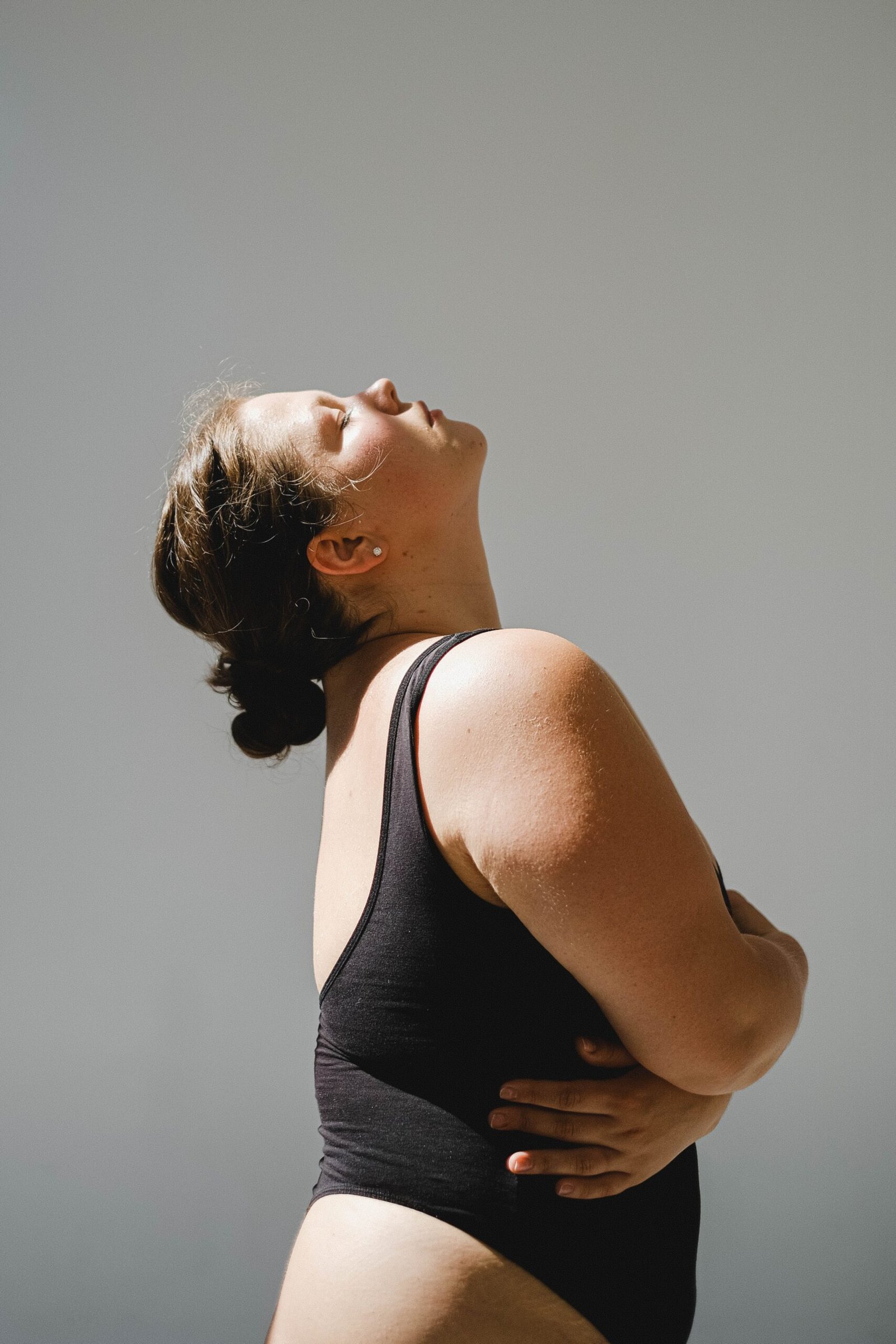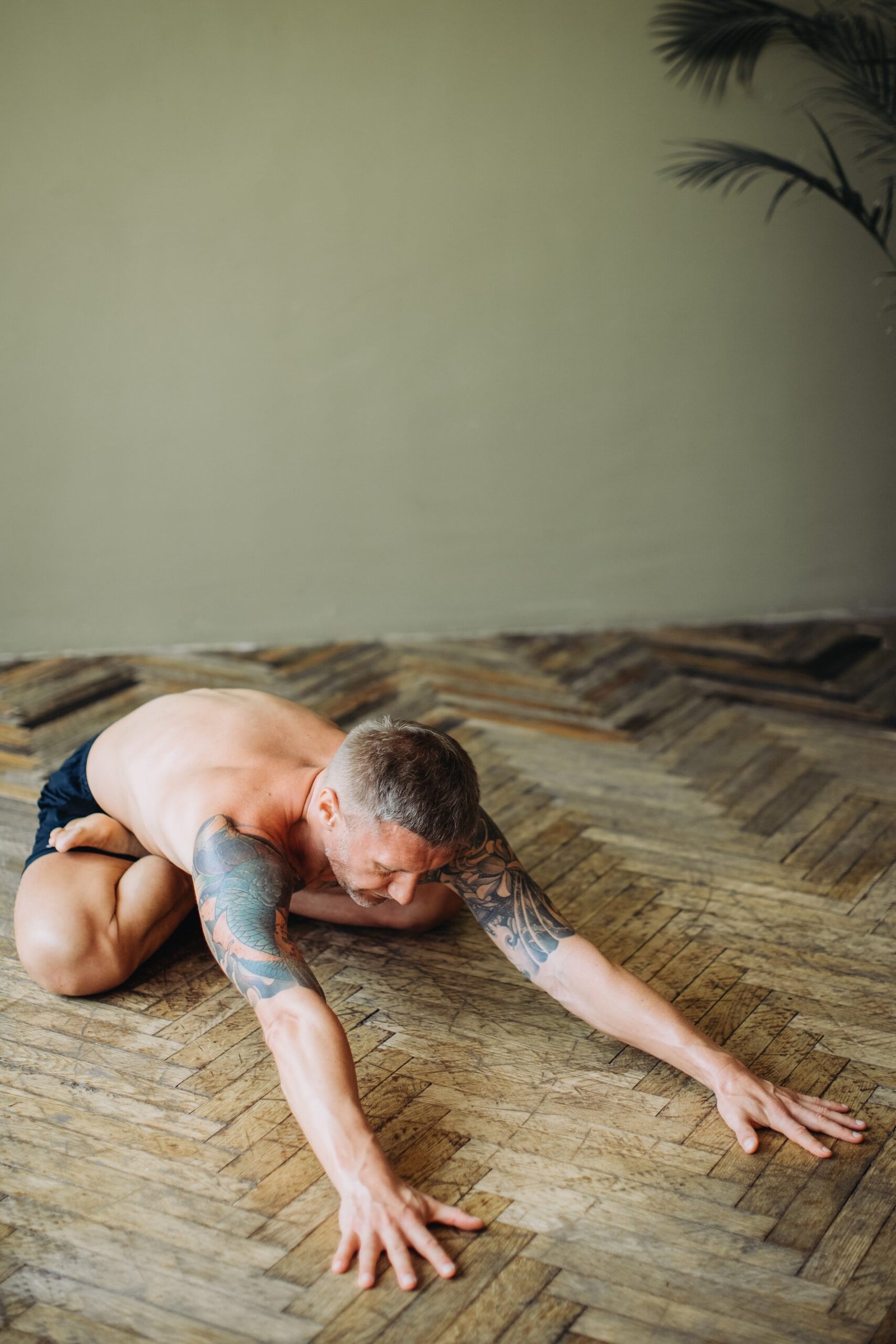
Having arm and shoulder pain after waking up can be a frustrating and uncomfortable experience. Whether it’s due to an uncomfortable sleep position or an underlying condition, finding relief is essential for a restful and pain-free day. In this article, we will explore some practical tips and exercises that can help you alleviate arm and shoulder pain after sleeping, allowing you to start your mornings feeling refreshed and ready to take on the day. So, if you’re tired of waking up with discomfort, read on to discover some helpful solutions.

Adjust Your Sleeping Position
Try sleeping on your back with a pillow under your knees
One of the most effective ways to relieve arm and shoulder pain after sleeping is by adjusting your sleeping position. Sleeping on your back with a pillow under your knees can help maintain a neutral spinal alignment, reducing the strain on your arms and shoulders. This position helps distribute your body weight evenly, relieving pressure from specific areas.
Use a supportive pillow to maintain a neutral spinal alignment
Choosing the right pillow is crucial for maintaining a neutral spinal alignment and reducing arm and shoulder pain. Look for a supportive pillow that is specifically designed to keep your head, neck, and spine aligned. A pillow that is too soft or too firm can cause discomfort and further exacerbate your pain. It’s important to find a pillow that suits your individual sleeping needs.
Avoid sleeping on your stomach as it can strain your neck and shoulders
Sleeping on your stomach can strain your neck and shoulders, leading to pain and discomfort upon waking up. This position puts your spine in an unnatural curve and places undue pressure on your joints. If you experience arm and shoulder pain after sleeping, it’s best to avoid sleeping on your stomach and opt for a different sleeping position.
Choose the Right Pillow
Consider using a contoured orthopedic pillow
A contoured orthopedic pillow is designed to provide optimal support to your head, neck, and shoulders. These pillows are specifically shaped to align with the natural curve of your spine, reducing pressure points and promoting proper alignment. By using a contoured orthopedic pillow, you can alleviate arm and shoulder pain and wake up feeling refreshed.
Opt for a memory foam pillow that molds to your head and neck shape
Memory foam pillows are known for their ability to mold to the shape of your head and neck, providing personalized support and reducing pressure points. This type of pillow is especially beneficial for individuals experiencing arm and shoulder pain after sleeping since it contours to your specific anatomy, offering relief and comfort throughout the night.
Try using a side sleeper pillow for better shoulder support
If you are a side sleeper, using a pillow specifically designed for this sleeping position can provide better shoulder support. Side sleeper pillows are typically higher on one side to adequately support your neck and keep your spine aligned while lying on your side. By using a pillow that caters to your sleeping style, you can reduce arm and shoulder pain and improve sleep quality.
Use Proper Bedding
Invest in a quality mattress that provides adequate support
A quality mattress is essential for maintaining proper spinal alignment and preventing arm and shoulder pain. Look for a mattress that offers adequate support for your body weight and sleeping position. A sagging or worn-out mattress can contribute to poor circulation and muscle strain, leading to discomfort after sleeping. Investing in a high-quality mattress can improve your sleep health and alleviate arm and shoulder pain.
Consider using a mattress topper for added cushioning
If your current mattress feels too firm or lacks cushioning, adding a mattress topper can provide extra comfort and support. A mattress topper can help alleviate pressure points and distribute your body weight more evenly, reducing arm and shoulder pain. Look for a topper made from materials like memory foam or latex, as they contour to your body and promote better sleep.
Use a body pillow for extra support
If you find yourself waking up with arm and shoulder pain, using a body pillow can provide additional support and relieve pressure points. Placing a body pillow between your arms and legs while sleeping on your side can help maintain proper alignment and minimize strain on your shoulders. Additionally, hugging a body pillow while sleeping on your back can prevent your arms from falling into uncomfortable positions, reducing the likelihood of waking up with pain.
Maintain Good Posture
Practice proper posture during the day to prevent shoulder and arm pain
Maintaining good posture throughout the day can significantly impact the occurrence of arm and shoulder pain after sleeping. Slouching or hunching over can strain your shoulders and contribute to muscle imbalances. Practice sitting up straight with your shoulders relaxed and your feet flat on the floor. Be mindful of your posture while standing, walking, and performing daily activities to prevent unnecessary strain on your shoulders and arms.
Sit up straight with your shoulders relaxed and your feet flat on the floor
Whether you’re at work or relaxing at home, sitting up straight with your shoulders relaxed and your feet flat on the floor promotes proper spinal alignment and reduces the risk of developing arm and shoulder pain. Adjust your chair and workspace to ensure that your back is well-supported, and consider using a cushion or lumbar roll to maintain proper posture throughout the day.
Use a supportive chair or ergonomic equipment while working
If you spend a significant amount of time sitting at a desk or using a computer, investing in a supportive chair and ergonomic equipment can make a significant difference in your comfort and overall health. A chair with adjustable features, lumbar support, and armrests can help maintain proper posture and reduce the strain on your arms and shoulders. Additionally, using an ergonomic keyboard and mouse can minimize repetitive strain injuries and prevent arm and shoulder pain.

Stretch and Exercise
Perform gentle stretches for the arms, shoulders, and neck before going to bed
Stretching before bedtime can help relax your muscles and relieve tension in your arms, shoulders, and neck. Incorporate gentle stretches into your nighttime routine, focusing on movements that target these areas. Stretching can improve flexibility, increase blood flow, and reduce muscle stiffness, promoting a better night’s sleep and minimizing arm and shoulder pain.
Include exercises that strengthen the muscles around the shoulder and upper back
Strengthening the muscles around your shoulder and upper back can help prevent arm and shoulder pain. Incorporate exercises such as shoulder presses, rows, and lateral raises into your exercise routine. These exercises target the muscles responsible for supporting your shoulder joints, promoting stability and reducing the risk of pain and discomfort.
Consult a physical therapist for personalized exercises
If you experience persistent arm and shoulder pain after sleeping, it may be beneficial to consult a physical therapist. A physical therapist can assess your individual needs and develop a personalized exercise program to target the specific muscles causing your pain. They can also provide guidance on proper form and technique to ensure maximum effectiveness and prevent further injury.
Apply Heat or Cold Therapy
Use a heating pad or warm towel to relax the muscles before bed
Applying heat to your arms and shoulders before bed can help relax tight muscles and relieve pain. Use a heating pad, warm towel, or hot water bottle and apply it to the affected areas for approximately 15-20 minutes. The heat promotes blood flow, reduces muscle tension, and prepares your body for a more comfortable sleep.
Apply a cold pack or ice wrapped in a cloth to reduce inflammation and numb the pain
If your arm and shoulder pain is accompanied by inflammation or swelling, applying a cold pack can provide relief. Wrap ice in a cloth or use a cold pack and apply it to the affected areas for about 10-15 minutes. The cold temperature helps reduce inflammation and numbs the area, temporarily relieving pain and promoting healing.
Alternate between heat and cold therapy for optimal relief
For some individuals, alternating between heat and cold therapy can provide optimal pain relief. This method, known as contrast therapy, involves switching between applying heat and cold to the affected areas. Start with heat for 10-15 minutes, followed by cold for the same duration. This alternating treatment can help decrease inflammation, increase circulation, and alleviate arm and shoulder pain.

Practice Relaxation Techniques
Try deep breathing exercises or meditation to reduce stress and tension in the body
Deep breathing exercises and meditation can help reduce overall stress and tension in the body, including in the arms and shoulders. Before bed, take a few minutes to focus on your breath, inhaling deeply and exhaling slowly. This practice can activate the body’s relaxation response, promoting muscle relaxation and alleviating arm and shoulder pain caused by tension.
Use relaxation techniques like progressive muscle relaxation or guided imagery
Progressive muscle relaxation and guided imagery are relaxation techniques that can be particularly effective in relieving arm and shoulder pain after sleeping. Progressive muscle relaxation involves tensing and then releasing each muscle group in your body, promoting relaxation and reducing muscle tension. Guided imagery involves visualizing peaceful and calming scenes, helping divert your attention from pain and promoting a more relaxed state.
Create a calming bedtime routine to promote better sleep
Establishing a calming bedtime routine can help signal your body that it’s time to relax and prepare for sleep. Engage in activities that promote relaxation, such as taking a warm bath, reading a book, or practicing gentle yoga stretches. By creating a consistent routine that promotes relaxation, you can reduce arm and shoulder pain and improve the quality of your sleep.
Consider Pain Relief Options
Take over-the-counter pain medications such as ibuprofen or acetaminophen
Over-the-counter pain medications such as ibuprofen or acetaminophen can provide temporary relief for arm and shoulder pain. These medications help reduce inflammation and alleviate discomfort. However, it’s important to use them as directed and consult with a healthcare professional if you have any underlying medical conditions or are taking other medications.
Use topical pain relief creams or ointments
Topical pain relief creams or ointments can be applied directly to the affected areas to provide localized pain relief. These products usually contain ingredients like menthol or capsaicin, which create a cooling or warming sensation that temporarily distracts from pain. Make sure to follow the instructions on the packaging and avoid using these products on broken or irritated skin.
Consult a healthcare professional for prescription options if the pain persists
If your arm and shoulder pain after sleeping persists or becomes chronic, it’s important to consult a healthcare professional. They can assess your symptoms, conduct further evaluations if necessary, and determine if prescription pain medication or other treatment options are appropriate. Seeking professional help ensures that you receive the necessary care and guidance for your specific condition.
Seek Professional Help
Consult a healthcare professional if the pain intensifies or limits your daily activities
If your arm and shoulder pain intensifies or starts to significantly impact your daily activities, it’s crucial to consult a healthcare professional. They can evaluate your symptoms, perform diagnostic tests if needed, and determine the underlying cause of your pain. Prompt medical attention can help prevent further complications and facilitate effective treatment.
Consider seeing a chiropractor or physical therapist for specialized treatment
Chiropractors and physical therapists specialize in diagnosing and treating musculoskeletal conditions that can cause arm and shoulder pain. They can provide targeted treatments such as spinal adjustments, soft tissue therapies, and exercises to alleviate pain and improve mobility. Consulting with a chiropractor or physical therapist can help address the underlying issues contributing to your arm and shoulder pain.
Discuss alternative therapies like acupuncture or massage
Alternative therapies such as acupuncture or massage can also be beneficial in relieving arm and shoulder pain. Acupuncture involves the insertion of thin needles into specific points on the body to promote pain relief and overall wellness. Massage therapy aims to reduce muscle tension, improve circulation, and alleviate pain through targeted manipulation of soft tissues. Discuss these options with a healthcare professional to determine if they may be suitable for you.
Ensure Proper Sleep Environment
Create a comfortable and conducive sleep environment
A comfortable sleep environment plays a significant role in reducing arm and shoulder pain after sleeping. Make sure your bedroom is clean, clutter-free, and designed for relaxation. Remove distractions such as electronics and create a space that promotes calm and tranquility.
Ensure your bedroom is cool, dark, and quiet
To optimize sleep quality and minimize arm and shoulder pain, ensure your bedroom is cool, dark, and quiet. Use blackout curtains or an eye mask to block out any unwanted light. Consider using earplugs or a white noise machine to drown out any disruptive sounds. Maintaining a consistent sleep environment can improve your overall sleep comfort and help alleviate arm and shoulder pain.
Use a supportive mattress and pillow for a restful sleep
Lastly, ensure you have a supportive mattress and pillow that cater to your specific needs. A mattress that offers adequate support and comfort for your body type and sleep preferences can significantly reduce arm and shoulder pain. Similarly, a properly supportive pillow that aligns your head, neck, and shoulders will contribute to a better night’s sleep and alleviate pain.
By implementing these strategies and making adjustments to your sleep routine and environment, you can greatly reduce arm and shoulder pain after sleeping. Remember to listen to your body, consult healthcare professionals when needed, and prioritize self-care to promote restful sleep and overall well-being.





